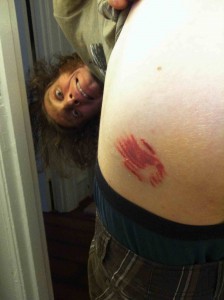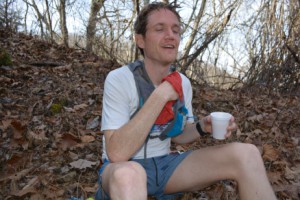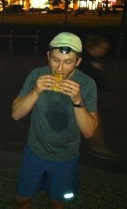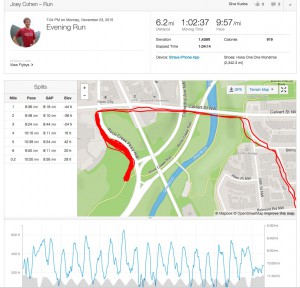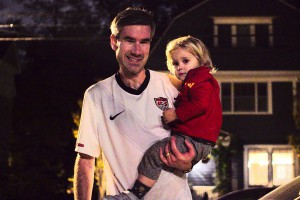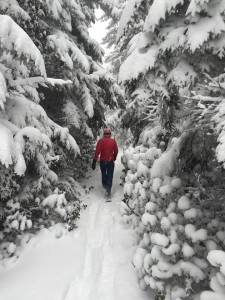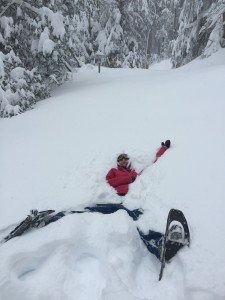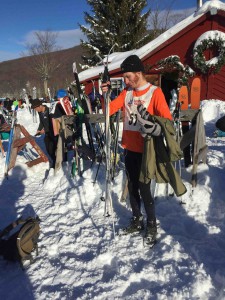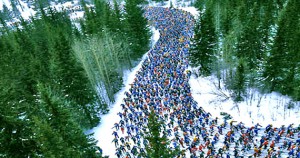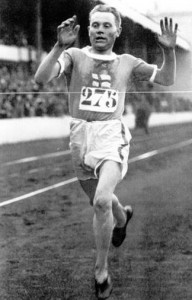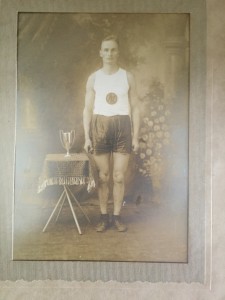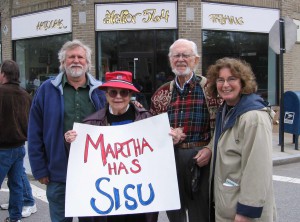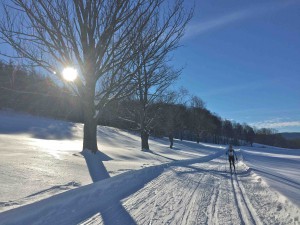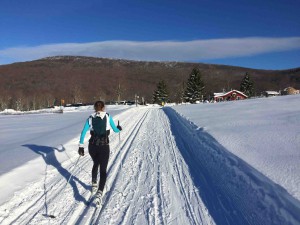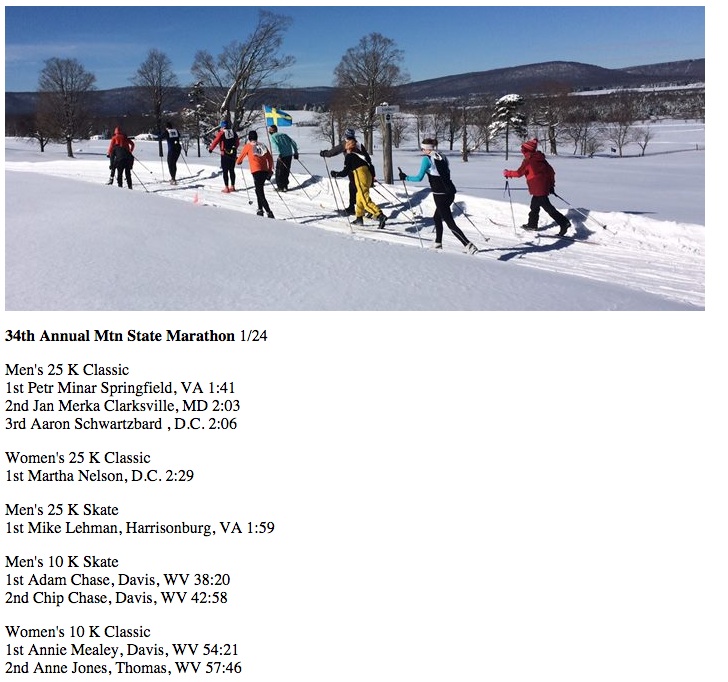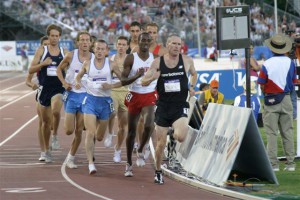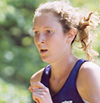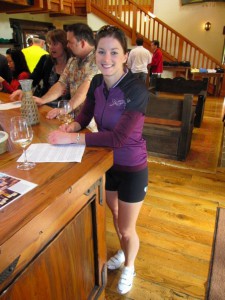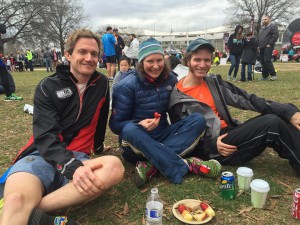
DC Rock ‘n’ Roll Marathon
March 12, 2016, Washington, DC
1. Where is Keith?
The DC marathon has changed a lot over the years. Five years ago it was taken over by the Rock ‘n’ Roll franchise, introducing bands and music along the course. Then they switched the start from RFK to the Mall. And over this time it’s surged from a couple hundred marathoners to now 25,000+ runners that bring traffic in the city to its knees. But the one permanent fixture over the years was Keith. Somehow I always ran into Keith at the starting line, where he would roll his head in ornery resignation, wondering what forces had again conspired to bring him to that same spot of concrete every year. So even though the starting line of the 2016 DC Rock ‘n’ Roll Marathon was crammed with thousands of runners, something was clearly missing. No Keith.
Fortunately Aaron and I were able to track down some of our other favorite WUSsies. Robin hadn’t been able to resist Catawba the week prior, and was smartly settling for the half. And newbie WUS Trevor was out to avenge his shave-over-3 hour previous marathon performance. I didn’t really have an explicit goal for the race. I have a knack for getting under 3 no matter what the circumstances (I haven’t had a marathon race float over 3 hours in over a decade). But a never-winning combination of several weeks of weird insomnia and squeezing in some long runs late and not getting in a quality taper was surely going to put that knack to the test. I hadn’t done any road run in the double digits. Come to think of it, I’d only done one road run total in the last month. Without any real goals for myself, I figured my best bet was to run with Trevor. Maybe if we teamed up we could both scoot under 3 hours.
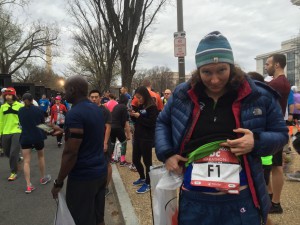
2. Trevor, will you run all my marathons with me?
I like to run with people. I’ve written previously about the differences in my and Aaron’s approaches to social running. The whole idea of running being a quiet time to self-reflect and be peaceful doesn’t resonate with me at all. I have a plump lazy kitty and a view of some nice oaks for that. If I’m going to haul myself out the door I want to have some fun. I want people to tell funny stories. Or at least laugh at mine. Isn’t that the entire point of being a distance runner? So that we can run at a pace where we can still chatter? Maybe I’m one of those obnoxious runners who won’t shut up.
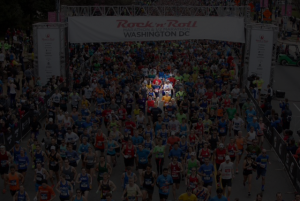
In the first mile I started chatting with some guy who’d never run the DC marathon before and was under the impression that it was fast. Are you familiar with the Calvert hill? What about the Fort Dupont hill at mile 22? I cleared things up for him. Then Robin sidled up next to us and the fun began. Robin and I are planning to rally the other female VHTRCers who are running Boston this year to form an Open Womens team. There’s a bunch of us — me, Robin, Amanda, Grace. We’d be a real solid team, all running around 3 hours, and could possibly be top-3.
I have a very strong sense of marathon pace. I wore a GPS watch just to collect data, but I didn’t look at it once. I sensed that running with Robin was making me run just a touch faster than I should, and let her go ahead. But running alone, my head quickly found the gutter. I realized my calves were tired from not getting a good taper. My quads were weak from not doing any long road runs. My hip wasn’t really firing right and my left foot was doing the flippy thing to compensate. I was exhausted and cranky from having such a rough time sleeping the past few weeks (I had never had such severe insomnia in my life; I’m still not sure what caused it). Just when I was starting to snivel about why I’d toed the line at all, Trevor swooped up to my side and sent the demons splitting.
The first half of the marathon course is a rollicking good time. It’s the prettiest part of the course, heading up Rock Creek Park and through Woodley Park and Adam’s Morgan. The marathoners and half-marathoners run together, so the pack is thick and the streets lined with spectators. Cecily and Ben on the Calvert Street hill with their big sign they’d made for me was a highlight of the day. Robin’s husband Adam made a surprise appearance on Columbia Road. And Trevor’s friends were on North Capital Street. There were even three police ponies on the Taft Bridge. It’s tough not to get caught up in the momentum of the first half, when the sights are good, the energy is high, and the half marathoners are blazing to their earlier finish. I had to keep reminding Trevor to rein it in. Our race doesn’t end at mile 13.
From that point on, Trevor and I pretty much ran the rest of the race together. I still had low points where various things hurt — calves and hips and hamstrings — but running with Trevor it was easy to stay positive and mission-focused. Trevor also got to know what it’s like to run as a girl and hear shouts of ‘Girl Power!’ and ‘You Go Girl!’ for three hours.
3. You wouldn’t like me when I’m caffeinated.
My nutrition plan for marathons is pretty simple: 1 gel at mile 8, 1 gel at mile 15, and 1 gel at mile 21. Drink every two miles, sometimes water, sometime gatorade, with some leeway. But I found myself unusually hungry and devoured a gel at mile 6, and another at mile 10. The salted watermelon GU was a big winner. I’d taken a half an immodium before the race prophylactically, and my stomach seemed to be holding strong. Fortunately, at mile 12 Robin was almost done with her half marathon and had a gel to spare, and she kindly donated it. It had a little bit of caffeine, and I warned Trevor that he wouldn’t like me when I’m caffeinated. But I desperately needed it at mile 16. Trevor clarified that he would very much like me when I’m caffeinated, only just for a very short period.
The race was handing out some kind of gel with an unfamiliar brand around mile 18. It was called Glukose or something. Now, I’m not saying that Glukose is a bad energy gel per se. But it’s frightening to try something new for the first time on race day. But by mile 20 I needed something besides gatorade and lobbed it down. It was really sweet and watery, unlike any gel I’d ever had. Its wateriness made it go down easy. But I wished they’d just given us something familiar.
I’ve learned that as the marathon goes on, it takes a lot more energy to slow down for the drink stations. By the time I hit mile 20 I pretty much make a deal with myself that if I get one more GU down, everything else from that point on is optional. At that point, hopefully I’ve banked enough hydration and food to get me through. When your legs are that tired, slowing down in the stations just makes it that much harder to get back up to speed again.
4. Are you the leader bikes?
When Trevor and I split from the half marathoners around mile 12 the field thinned considerably and we were pretty much on our own. I noticed that two official-looking people on bikes shot out onto the street ahead of us and seemed to be looking over their shoulder at us regularly. With the half marathoners gone and the bikes ahead, I remembered that this was actually a race and wondered what place I was in. Were those bikes for me? I yelled ahead at the bikes to try to figure out what they were doing (maybe they were 3-hour pace bikes?), but they were too far ahead.
Normally the leader bike is my best friend. Running alone, the leader bike gives me someone to talk to. Sometimes it’s a guy on a bicycle, sometimes a guy on a motorcycle, but they always stay close to me, cooling my nerves, and giving me information about how far ahead or behind other female runners are. At the Charlottesville Marathon I pawned some snacks off the lead motorcycle. At the St Paul marathon the lead bicycle became my number 1 fan, urging me on in the final miles of a sweltering hot day.
But these were the most useless leader bikes I’d ever encountered. They rode 100 yards ahead, out of ear shot. I couldn’t even figure out if they were for me. Finally I enlisted the help of a random biker on the street to shoot ahead and figure out their deal. The kind biker came back to tell me that they were both leader bikes for the second place female, who was apparently me. I was so distracted by the issue about the leader bikes that I didn’t even notice what we went through the half in, but apparently it was just a shade over 1:30.
5. The ugliest section of the course has no redeeming features except getting to see Bear
Miles 15-17 make you want to die. It’s a low point mentally anyway, as your legs are starting to feel fatigued but you still have 10+ miles to go. And the marathon takes you in this stupid out-and-back 2-mile hairpin through the ugliest part of the city along the southern peninsula. The first place woman was about 4 minutes ahead of me in this section, looking like she had the race in her pocket. But at least Trevor and I got to see Aaron, who always seems impossibly joyous. Apparently Aaron was greatly relieved to see me running with Trevor. I was his problem now.
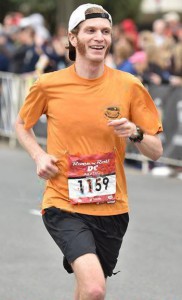
6. The only thing worse than the out-and-back is the grated bridge.
This sucks! To add insult to injury, when you finally get out of the mile 15-17 box you have to run across a bridge with painful grates. I recall from the New York City marathon that they put nice soft carpeting over the bridges between the city’s five burroughs, sparing our poor runner feet from the damage of pointy metal spikes. But with the DC Rock ‘n’ Roll you get the feeling that after the half marathon the entire race organization just stops caring.
7. The Loneliness of the Long Distance Runner
When you finally survive the pointy bridge surface, you find yourself in the loneliest part of the course going through Anacostia Park. I found myself repeatedly turning my head to the left to peer at the cityscape across the river, because what’s ahead was just a wasteland of emptiness. The half marathoners were seeming awfully smart at this point. When I asked Trevor after the race if there was any point when he had doubts about whether he would break 3 hours, he immediately thought of this gloomy stretch. But I had done a little math and knew that Trevor and I could not slacken our pace if we wanted to slip under 3 hours. Trevor admits that I pushed him a bit in this section, and we started passing other runners.
8. In the bag
Trevor and I had stopped chatting miles ago. But from time to time we mustered some words of encouragement. It was a huge relief when we went through mile 20 in 2:15. We could do a 10k in under 45, no sweat, I reassured him.
9. Do you see it?
Trevor had no idea what I was talking about when I asked him if he saw ‘it’? Apparently mile 21 was not the time for vagueness. But I sure saw it. The first place woman and her two guide bikes, not looking altogether chipper, just ahead of us. We had just passed mile 21 and were on Pennsylvania Avenue, just about to start the most grueling climb of the race up Fort Dupont park. Unbeknownst to me, I had been gradually chipping away at her lead ever since we’d passed each other in the out-and-back at mile 15.
I’m not really an uphill runner. I continually let Trevor run ahead on the uphills. He left me for dead sausage on the Calvert hill. So a dogfight between me and the lead woman up the Fort Dupont hill seemed like a losing proposition. Maybe I could just hang behind her for the next five miles and then try to out-kick her at the very end, just like I did last year. But a prolonged dogfight seemed even less appealing.
The Fort Dupont hill is the undoing of many a DC Rock ‘n’ Roll marathoner. My friend Tara is a hill fiend from the mountainous trails of State College, PA, and even she admitted that the size of Fort Dupont did her race in this year. It’s not as steep as the Calvert hill, but it comes at a point in the race when your legs are already fried. And it never seems to end.
Once the lead lady got into the mix, Trevor and I had to run our own races. We kept in loose contact, but Trevor knew that it was Game On and I had to throw down everything I had. I passed the lead woman at mile 22, just at the base of the hill. I kept thinking about MountainBack and all the years I’ve spent splitting my shins up those hills. When we finally had climbed most of the hill, Trevor told me she was 100 yards back. I barely had the strength to acknowledge his words, but I appreciated them very much nonetheless.

After the fact, you can use Strava data to compare the time difference between me and the woman who led the race for most of the way. You can see the turning point around mile 15 and how linear the change was, even after I passed her. Trevor and I ran impossibly even splits (a slight negative split even), showing that the difference between running a bit over 3 and a bit under comes down to pacing.
10. ‘Splash zone‘
I couldn’t help but compare the last miles of the race this year to the previous year. Last year I whipped up Fort Dupont’s hill no problem and flew to the finish with an ease I may never feel again. Last year my last two miles were 6:08 and 6:04. This year, it took all I could muster to drop a 6:28 and a 6:58. And getting down to that 6:28 might have taken a toll. I wanted so much to steam to victory in the last two miles to the finish. I started throwing down hard. And then at mile 25 I threw up, some off to the side, some down the front of my bib. I felt like I’d been hit by a brick. It occurred to me that everything could unravel in the last mile, and I needed to just keep a steady course. I never turn my head to look back in races, but I could sense that Trevor was following not far behind me, and no sign of the formerly lead woman.
Last year I won in the final sprint and had only a fleeting moment of being in the lead. So this year I made sure to savor being the lead woman down the stretch even if my leg turnover was labored. Even though it felt like I was kind of blowing up, my 6:58 final mile wasn’t actually that far off my average pace of 6:47.
At some point Trevor’s wife Kelly jumped in on her bike and paced Trevor through his final miles. At one point she yelled ‘Go Martha!’ But from my end it sounded more like a ‘Martha!’ warning call and a whirled around half-expecting to see the other woman back on my heels.
As tough as that last 0.2 miles is, it’s a thrill to run through the finish area, with spectators howling on both sides. I put a hand up and waved to signal my appreciation. When I crossed the finish line they draped an American flag around my shoulders. But they had to quickly remove it when I started throwing up buckets of fluorescent gatorade. It was a high frequency, high volume vomit. Aaron, who’d had a banner day himself, finishing 8th in 2:45, was impressed by the quantity of liquid being expelled from my stomach.
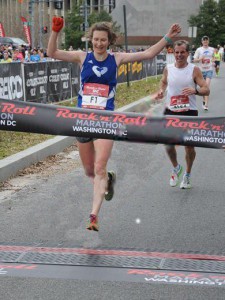
Typically I get really ill about 20-30 minutes after a race. But this year it was full on puke-and-rally. I gave a bunch of interviews. There were little write-ups in Run Washington and Competitor. The Washington Post sports section had a little blurb. For some reason even though I always mention WUS as my running club it never gets into the article. The reporters also seemed entirely uninterested in the details of my vomit. 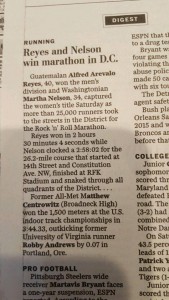 Whereas last year it was raining and cold and everyone made a beeline out of there, this year we sat around on the grass a while with Trevor and his friends, pilfering the VIP tent and its choice array of drinks and snacks, including a marvelous plate of kettle chips greatly enjoyed by Trevor, whom I can forgive for eating all my chips only because he made my entire race experience delightful even when I was vomiting in my own mouth. Trevor is living proof that environmental influences are entirely over-rated. Trevor floated through the triple-death-combo of St. Albans School for Boys/Princeton (engineering no less)/Finance career without absorbing any of the stereotypes. I’m still trying to wrap my head around this.
Whereas last year it was raining and cold and everyone made a beeline out of there, this year we sat around on the grass a while with Trevor and his friends, pilfering the VIP tent and its choice array of drinks and snacks, including a marvelous plate of kettle chips greatly enjoyed by Trevor, whom I can forgive for eating all my chips only because he made my entire race experience delightful even when I was vomiting in my own mouth. Trevor is living proof that environmental influences are entirely over-rated. Trevor floated through the triple-death-combo of St. Albans School for Boys/Princeton (engineering no less)/Finance career without absorbing any of the stereotypes. I’m still trying to wrap my head around this.
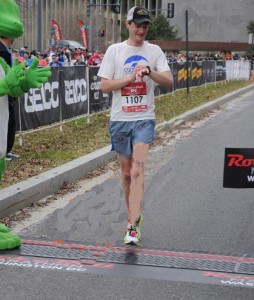
Aaron and I had much to celebrate, and met up with Cecily and Ben for brunch at….where else?…Cleveland Park Bar & Grill.
* Reality Check: I recognize that the hype-to-performance ratio at the DC marathon is unusual. Running 2:58 is a quality time for a woman, but but it’s not a time that’s going to win any of the marathons with the prize money to draw real elites. I wasn’t in great fitness, and this wasn’t a particularly great performance. But I was tough mentally. And it’s fun to have a race where normal non-elites like me get to have a little taste of victory on a big stage.

